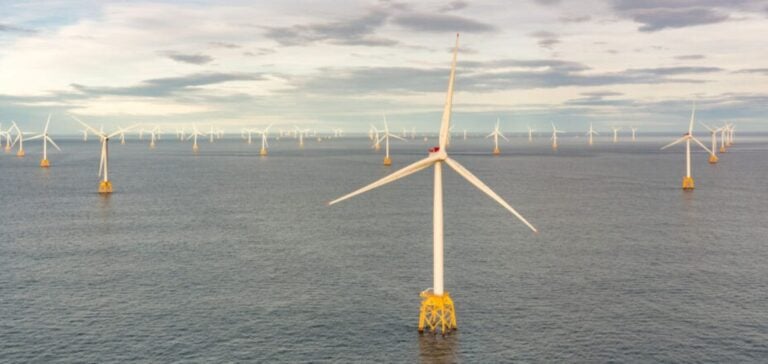Vestas completes turbine installation for the Zhong Neng offshore wind farm, located off the coast of Taiwan.
With 31 V174-9.5 MW wind turbines in operation, the project reaches a capacity of 300 MW, meeting part of the country’s energy demand.
This wind farm plays a central role in Taiwan’s efforts to increase the share of renewable energies in its energy mix, aiming for a rise from 11% to 30% by 2030.
Strategic challenges for Taiwan’s energy sector
Against a backdrop of growing demand for renewable energies, linked to the high energy intensity of the semiconductor and artificial intelligence industries, Taiwan is seeking to diversify its energy sources.
The development of offshore wind farms like Zhong Neng is a direct response to the country’s energy security challenges.
The commissioning of these 31 wind turbines contributes to this diversification effort, while tapping local potential for critical turbine components.
Complex installation and local collaboration
The Zhong Neng facility stands out for its ability to overcome complex challenges, including harsh climatic conditions such as typhoons and frequent earthquakes.
Cooperation between Vestas and its local partners was essential.
Components such as blades, towers and hubs were manufactured by local companies, including Tienli Offshore Wind and Fortune Electric Co, Ltd, thus reinforcing local integration and reducing logistics costs.
Impact on the local supply chain
The project relies heavily on a Taiwanese supply chain for wind turbine components.
This strategy has involved players such as Swancor for blade materials, YeongGuan Group for castings, and CS Wind for tower manufacture.
By integrating these local suppliers, the Zhong Neng wind farm is positioned as a model of localization, minimizing dependence on imports and maximizing local added value.
Outlook for offshore wind power development
The completion of Zhong Neng offers interesting prospects for the future development of offshore wind energy in Taiwan.
The results achieved through this collaboration between international and local players could encourage further investment in this sector.
In addition, the increased localization of the supply chain could stimulate further projects, reducing costs and improving the resilience of operations to the vagaries of the global supply chain.
Future offshore wind developments in Taiwan will depend on the ability to replicate this model of industrial cooperation and local integration.
Future initiatives could build on the lessons learned from Zhong Neng, with the potential for stronger partnerships between international investors and local companies.






















